12 Efficient Natural Home Remedies for Fleas on Dog
Managing fleas doesn’t have to rely on harsh chemicals. This guide covers natural, effective flea control methods that keep your dog and home safe. From the flea-repellent power of apple cider vinegar, lemon, and essential oils like lavender and cedarwood, to household solutions like baking soda, salt, and diatomaceous earth, these remedies target fleas in gentle, affordable ways.
Steam cleaning, homemade sprays, and simple flea traps offer additional protection, while dietary supplements like brewer’s yeast can help repel fleas from the inside out. Combining these safe, eco-friendly methods can help keep fleas under control. Always monitor for skin sensitivities and consult with your veterinarian for the best approach for your pet’s unique needs. Explore these natural flea control methods to keep your dog comfortable and your home flea-free.
Key Takeaways:
- Use apple cider vinegar in a spray to create an acidic environment that repels fleas.
- Apply diatomaceous earth to your dog’s bedding to dehydrate and kill fleas.
- Bathe your dog with pet-safe flea shampoo to reduce flea infestations.
- Create a lemon infusion spray to deter fleas with the natural citric acid.
- Add brewer’s yeast to your dog’s food to enhance coat health and immune system.
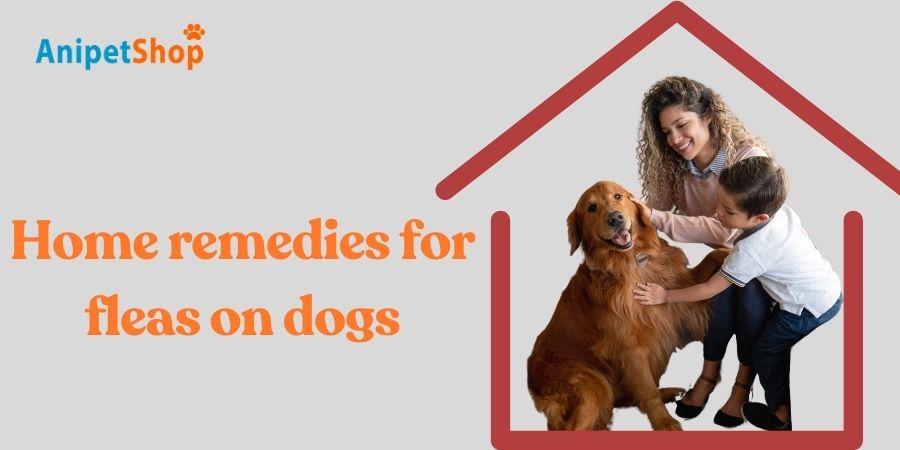
Apple Cider Vinegar
Apple cider vinegar is a widely recommended natural remedy for repelling fleas on dogs due to its acidic nature and antibacterial properties. The high acetic acid content in apple cider vinegar creates an unfavorable environment for fleas, deterring them from settling on your pet. Additionally, its antibacterial properties help in preventing any secondary infections that may arise from flea bites or scratching.
To utilize apple cider vinegar effectively, it is important to prepare a dilute solution. A common method involves mixing equal parts of apple cider vinegar and water. This solution can be applied directly to your dog’s coat using a spray bottle, ensuring that you avoid sensitive areas such as the eyes, nose, and any open wounds. The application should be thorough, covering all parts of the dog’s body to guarantee maximum efficacy. It is advisable to let the solution air-dry on the coat, which enhances its flea-repelling properties.
Bathing your dog with an apple cider vinegar solution is another effective approach. Add one to two cups of apple cider vinegar to your dog’s regular bath water. This not only helps in repelling fleas but also leaves the coat shiny and soft. The acidic nature of the vinegar helps to balance the pH levels of the skin, promoting a healthier coat overall.
While apple cider vinegar is generally safe for external use, it is essential to monitor your dog for any signs of skin irritation. If any adverse reaction occurs, discontinue use immediately and consult a veterinarian. This natural remedy can be an integral part of a holistic approach to flea prevention, complementing other methods for thorough flea control.

Lemon
Lemon, with its natural acidity and pleasant citrus scent, serves as an effective and non-toxic home remedy for repelling fleas on dogs. The citric acid found in lemons acts as a natural flea deterrent, disrupting the life cycle of these persistent pests. The aroma of lemon is generally disliked by fleas, making it a doubly effective solution.
To prepare a lemon-based flea repellent, begin by slicing a lemon into thin rounds. Place the lemon slices in a pot of water and bring it to a boil. After boiling, let the mixture steep overnight to create a potent lemon infusion. In the morning, strain the liquid into a spray bottle. This lemon water can then be applied to your dog’s coat, ensuring thorough coverage without soaking the fur. Pay special attention to areas where fleas are most likely to congregate, such as behind the ears, around the neck, and at the base of the tail.
It is important to note that while lemon is generally safe for topical use, it should never be ingested by dogs. Monitor your pet closely for any signs of irritation or allergic reaction, such as redness or excessive scratching. If such symptoms occur, discontinue use immediately and consult your veterinarian.
Regular application of lemon water can notably reduce flea infestations and provide your dog with relief. This method is not only effective but also offers a natural alternative to chemical treatments, ensuring the safety and well-being of your pet. Incorporating lemon into your flea control regimen can lead to a happier, healthier dog and a flea-free home.

Essential Oils
Essential oils provide a natural, effective way to control fleas on dogs, minimizing exposure to harsh chemicals. Popular choices like lavender, eucalyptus, peppermint, cedarwood, and lemongrass each offer unique benefits in flea control. Lavender oil is known for its soothing properties and contains compounds that interfere with the flea lifecycle, reducing their ability to reproduce and spread. Eucalyptus oil, with its invigorating scent, effectively repels fleas, keeping your pet comfortable and flea-free.
Peppermint and cedarwood oils provide added protection with dual benefits. Peppermint oil not only repels fleas but also offers a cooling sensation to relieve itching from flea bites. Cedarwood oil contains natural insecticidal compounds that kill fleas on contact and deter future infestations, making it a powerful choice for routine flea control. Lemongrass oil, with its citrusy scent, not only freshens your pet’s coat but also discourages fleas from settling on their fur. Together, these oils form a comprehensive, natural approach to managing fleas on dogs.
When using essential oils, proper dilution is key to ensuring your pet’s safety. Essential oils are highly concentrated and should be mixed with a carrier oil, such as coconut or olive oil, to avoid irritation. A few drops of essential oil per teaspoon of carrier oil is generally safe; this mixture can be applied to your dog’s coat by massaging gently into areas where fleas tend to gather, such as the neck, back, and base of the tail. Testing a small patch first helps to ensure your dog does not have an adverse reaction. It’s also wise to consult with your veterinarian to confirm which oils and concentrations are best for your dog’s breed and size.
In addition to these essential oils, coconut and neem oils offer excellent natural flea control. Coconut oil, known for its moisturizing and anti-inflammatory properties, repels fleas with medium-chain fatty acids, especially lauric acid, which helps kill fleas while soothing skin. Applying unrefined coconut oil directly onto your dog’s fur not only deters fleas but also leaves a soft, shiny coat. Neem oil, extracted from the neem tree, is another powerful choice for flea control; its active compounds, including azadirachtin, disrupt flea growth and reproduction. When diluted properly (one part neem oil to ten parts carrier oil), neem oil can be massaged into your pet’s coat or added to shampoo, providing lasting protection against flea infestations.
A rosemary rinse is another natural option to repel fleas and soothe your dog’s coat. Rosemary contains rosmarinic acid and natural essential oils with flea-repellent properties. To make a rosemary rinse, boil two cups of fresh rosemary leaves in a quart of water for about 30 minutes. Once cooled, strain the liquid and dilute it with a gallon of warm water. After bathing, pour the rosemary rinse over your dog’s coat and let it air dry, allowing the natural oils to provide lasting flea repellency. For extra protection, you can grind dried rosemary into a fine powder and sprinkle it onto your dog’s bedding to create a pleasant, flea-deterring environment.
Combining essential oils, coconut and neem oils, regular baths, and rosemary treatments can provide a comprehensive, natural approach to flea management on dogs. Use these methods consistently during peak flea seasons to keep your dog comfortable and flea-free. Always consult with your veterinarian to ensure that these natural remedies are appropriate for your pet’s unique health needs.
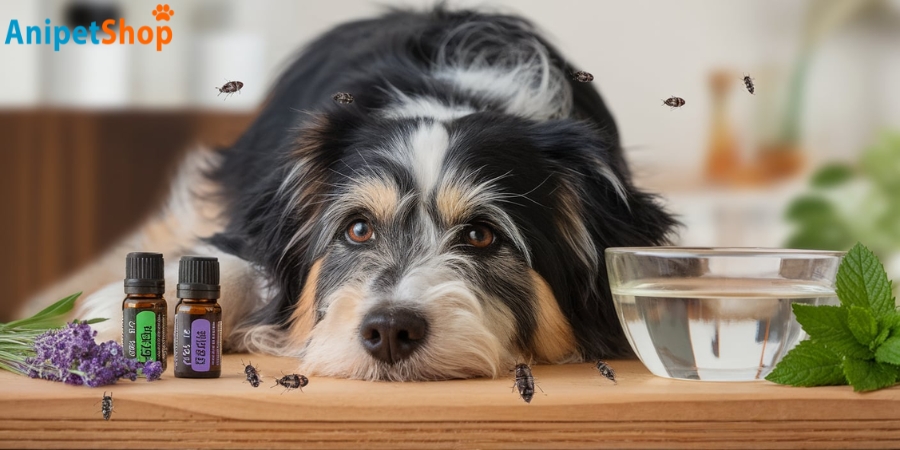
Baths and dips
Bathing your dog regularly is a key step in managing fleas, offering immediate relief and disrupting the flea life cycle by washing away adult fleas, eggs, and larvae. Using a pet-safe flea shampoo designed to combat fleas helps ensure effective results, as these shampoos contain ingredients that kill fleas on contact. However, for a simpler, affordable alternative, mild, fragrance-free dish soap can also be used effectively in place of flea shampoo. The soap works by breaking down the flea’s exoskeleton and suffocating the fleas, providing immediate relief for your pet.
When bathing with either flea shampoo or dish soap, proper technique is crucial. Start by thoroughly wetting your dog’s coat with lukewarm water, then apply the shampoo or dish soap generously, making sure it reaches the skin. Focus on areas where fleas are most common, such as the neck, underbelly, base of the tail, and under the legs. Allow the shampoo or dish soap to sit for about five minutes, giving it time to act on the fleas before rinsing your dog’s coat completely.
To maximize the effectiveness of each bath, follow up with a fine-toothed flea comb to remove any remaining fleas, eggs, or larvae that may be trapped in your dog’s fur. While dish soap can be helpful in quickly reducing flea numbers, it does not provide long-term prevention. Therefore, it’s best to integrate this method with regular flea shampoos and other flea control measures for comprehensive protection.
Remember, dish soap should be used sparingly as it may dry out your dog’s skin if used too frequently. Always consult your veterinarian before using dish soap or any home remedy to confirm it’s suitable for your pet’s skin and health. Regular baths, combined with targeted flea prevention products, will help keep your dog comfortable and free from fleas.
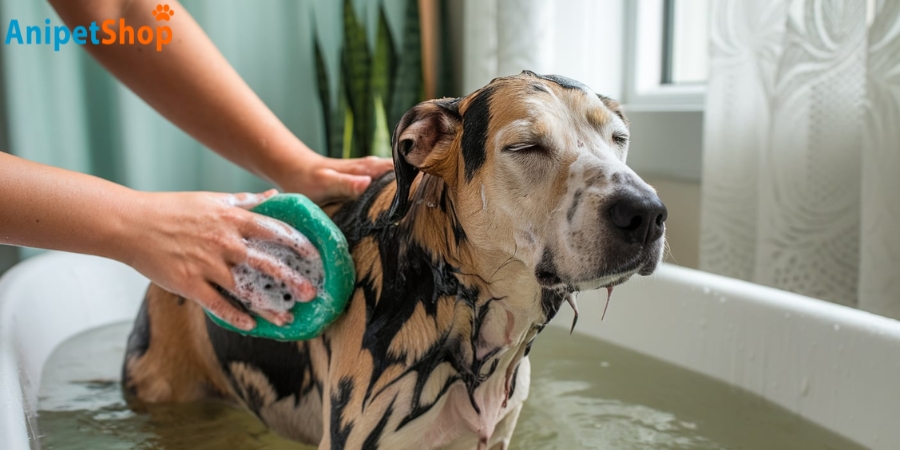
Flea trap
Creating a simple flea trap at home is an effective way to reduce flea populations, especially when combined with other flea control methods. This homemade trap works by luring fleas into a bowl of soapy water, where they become trapped and ultimately drown. The dish soap breaks the surface tension of the water, making it sticky and viscous, preventing fleas from escaping once they jump in.
To make a flea trap, fill a shallow bowl or dish with warm water and add a few drops of dish soap, mixing gently to ensure an even distribution of soap. Place the bowl on the floor in areas where fleas are most active, such as near pet bedding, rugs, or corners of the room. For added effectiveness, position a small nightlight or lamp near the bowl; fleas are attracted to light and warmth, and the glow will draw them toward the trap. The combination of light and the soapy water creates a highly effective lure, especially at night when fleas are most active.
In the morning, you’ll likely see trapped fleas in the water. Dispose of the water carefully by pouring it down the drain, and wash the bowl thoroughly with hot, soapy water before reusing it. For persistent flea problems, consider setting up multiple traps throughout the house to cover various flea hotspots. Refill and refresh each trap nightly for several days to capture as many fleas as possible and significantly reduce the infestation.
While flea traps are highly effective for catching fleas in localized areas, they work best as part of a comprehensive flea control plan, which may include vacuuming, steam cleaning, and pet-safe flea treatments. Regularly setting out these traps can help monitor flea activity in your home, providing a chemical-free and inexpensive method to manage fleas and keep your environment comfortable for both you and your pet.
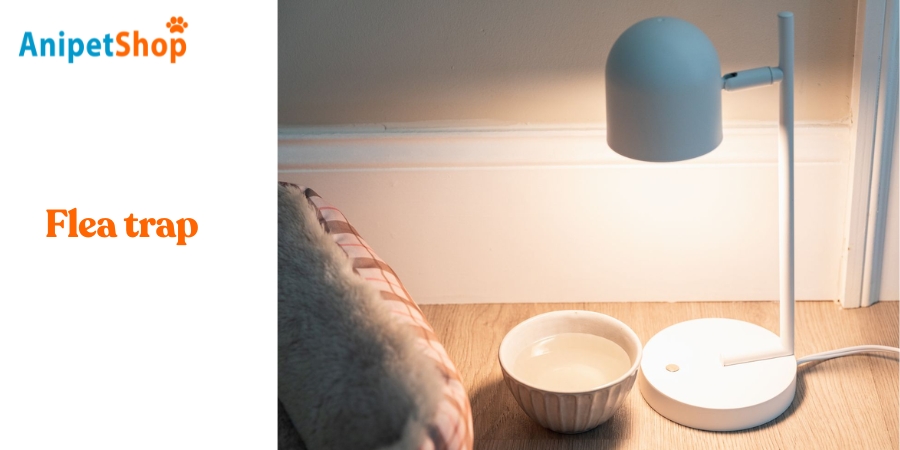
Diatomaceous Earth
Another effective and natural remedy for combating fleas on dogs is diatomaceous earth, a fine powder composed of fossilized remains of diatoms. This unique substance serves as a powerful desiccant, effectively dehydrating and killing fleas upon contact. Its sharp microscopic edges pierce the exoskeleton of fleas, leading to their eventual demise. Despite its deadly effect on insects, diatomaceous earth is safe for pets and humans when used correctly.
When selecting diatomaceous earth for flea control, it is important to choose food-grade diatomaceous earth, as other forms may contain harmful additives. To apply, lightly sprinkle the powder onto your dog’s fur, focusing on areas where fleas are likely to congregate, such as the neck, back, and tail. Gently rub the powder into the coat to ensure full coverage. It is advisable to apply diatomaceous earth in a well-ventilated area to prevent inhalation, which can be an irritant.
In addition to direct application on your pet, diatomaceous earth can be used to treat your dog’s environment. Sprinkle the powder on your pet’s bedding, carpets, and other areas where fleas might thrive. Allow it to sit for several hours or overnight before vacuuming thoroughly. This method helps to break the flea life cycle and reduce the likelihood of re-infestation.
While diatomaceous earth is highly effective, it is essential to use it as part of a thorough flea management plan. Regular grooming, maintaining a clean living environment, and monitoring your dog for signs of fleas are all vital elements in keeping your pet flea-free.
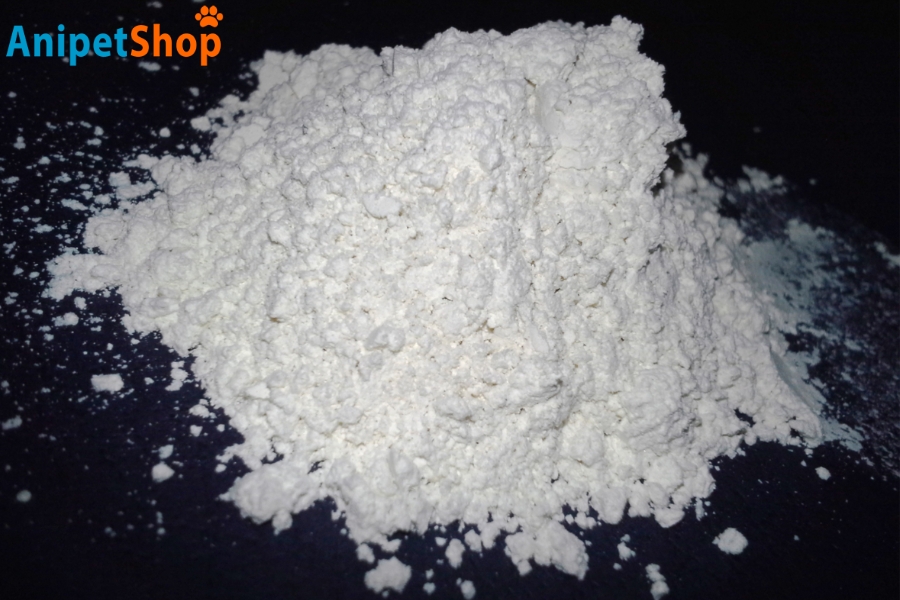
Steam cleaning
Steam cleaning is an effective and eco-friendly way to tackle flea infestations in your home. By using high-temperature steam, it not only kills adult fleas but also eradicates their eggs and larvae hiding in carpets, upholstery, and pet bedding. The intense heat produced by steam cleaners is lethal to fleas in all life stages, preventing reinfestation and significantly reducing the flea population in your home.
A major advantage of steam cleaning is its ability to penetrate deep into carpet fibers and furniture where fleas typically lay eggs and hide. Traditional vacuums often lack the power to reach these deeper layers, but steam cleaning delivers heat that penetrates effectively, neutralizing hidden fleas and their eggs. In addition, the high-temperature steam kills bacteria, mites, and allergens, offering a thorough and hygienic clean that benefits both pets and household members with sensitivities.
For optimal flea control, start by vacuuming the area first to remove surface dirt and debris, as this will allow the steam to penetrate more effectively. Follow up with a steam cleaner, moving slowly to ensure the steam has time to heat each area sufficiently. Areas frequented by your pet—like favorite sleeping spots, rugs, and corners—should be given extra attention, as these are common flea hotspots.
Water-based vacuums, which trap fleas and other pests in a water reservoir, can also be useful in flea prevention as they effectively drown fleas, unlike traditional vacuums where fleas might survive and escape. Using a combination of water-based vacuuming and steam cleaning creates a powerful defense against fleas, helping prevent any chance of recurrence.
Aside from its flea-fighting benefits, steam cleaning leaves your home looking and smelling fresh without the need for harsh chemicals. With regular use, it helps maintain a clean, flea-free environment, making it an ideal solution for pet owners who want an all-natural, effective approach to home hygiene and pest control. Remember to allow treated areas to dry fully before allowing pets to re-enter, ensuring a comfortable and safe space for everyone in your household.
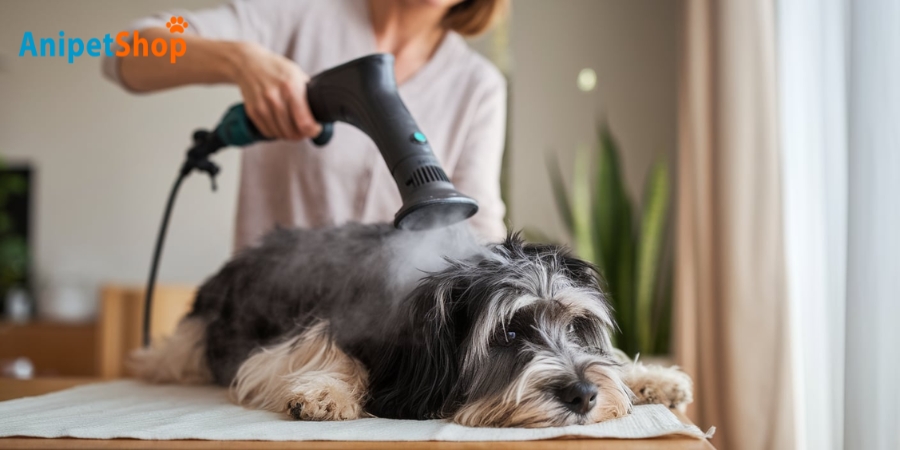
Natural Homemade Flea Spray
Homemade flea sprays provide a safe, chemical-free alternative to commercial flea treatments, utilizing simple ingredients like apple cider vinegar, lemon, and herbs. These natural remedies offer effective flea control while keeping your pet and environment toxin-free. Crafted with essential oils and other household ingredients, these sprays provide an eco-friendly approach to flea management that can easily be incorporated into your pet care routine.
One popular flea spray recipe combines apple cider vinegar with water in equal parts. Vinegar is known for creating an acidic environment that fleas dislike, making it an effective natural repellent. For enhanced flea control, add a few drops of flea-repellent essential oils like lavender or cedarwood, both of which naturally deter fleas and leave a pleasant scent on your dog’s coat. Shake the mixture well before use, and apply it directly onto your dog’s fur, taking care to avoid the eyes and other sensitive areas. For best results, reapply every few days to keep fleas at bay.
Lemon, another powerful flea deterrent, can be used to make a homemade citrus spray. Lemons contain d-limonene, a natural compound with insect-repelling properties. To create a lemon spray, slice a lemon thinly and boil it in water, letting it steep overnight to maximize the citrus infusion. Once cooled and strained, transfer the liquid to a spray bottle. Apply the lemon spray to areas where fleas tend to hide, such as the neck, behind the ears, and the base of the tail. The natural acidity of lemon not only repels fleas but also adds a fresh scent to your pet’s coat, doubling as an odor neutralizer. Regular weekly application can maintain the repellent effect and help keep fleas away.
For a more herbal-based approach, you can create a flea spray using rosemary, peppermint, and eucalyptus—herbs known for their natural flea-repelling properties. Boil these herbs in water, let the mixture cool, and strain it before transferring to a spray bottle. This herbal spray provides an aromatic layer of protection and can be applied to your dog’s coat as needed. As with other natural sprays, test a small patch of skin first to ensure there’s no irritation before using it more broadly.
Homemade flea sprays using apple cider vinegar, lemon, and herbs offer a holistic, non-toxic solution to flea control. Always conduct a patch test before full application and consult your veterinarian if needed, especially if your dog has sensitive skin or allergies. With regular use, these sprays can contribute to a flea-free environment, providing your pet with comfort and protection in a safe, environmentally friendly way.
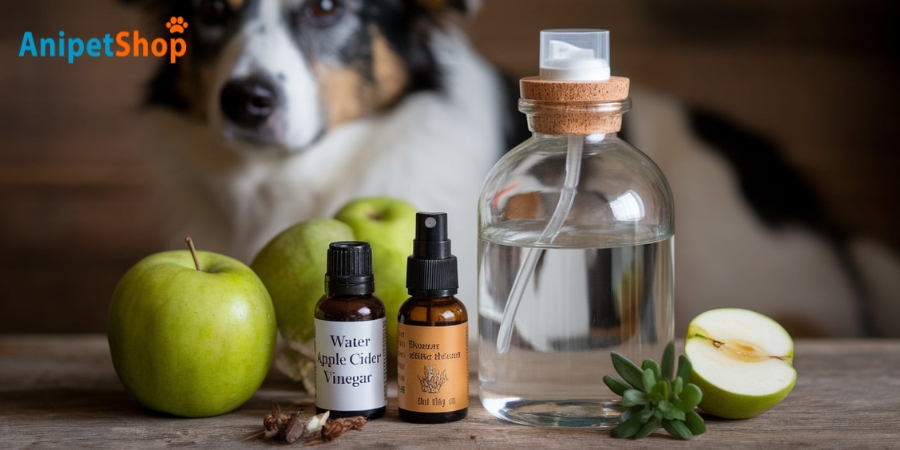
Baking Soda
Why not consider baking soda as a simple, yet effective home remedy for controlling fleas on dogs? Baking soda, a staple in many households, possesses properties that can assist in the management of flea infestations. Its alkaline nature helps to neutralize odors and can create an environment that is inhospitable for fleas.
The application of baking soda as a flea deterrent is straightforward. It can be used in combination with salt for enhanced efficacy. To begin, sprinkle a generous amount of baking soda and salt mixture on the dog’s coat, ensuring even coverage. Gently massage it into the fur, taking care to avoid the eyes and mucous membranes. Leave the mixture on for several minutes to allow it to work effectively against the fleas before thoroughly brushing it out. This method not only assists in dehydrating fleas but also helps to soothe any irritation caused by flea bites.
In addition to direct application on the dog, baking soda can also be used to treat the environment. Fleas often thrive in carpets and furniture. Sprinkling baking soda onto these surfaces and then vacuuming after a few hours can help to reduce the flea population in the home. This method works by dehydrating the fleas and their larvae, thereby disrupting their life cycle.
It is important to note that while baking soda can be an effective tool in managing fleas, it should be part of a comprehensive flea control plan. This includes regular grooming, environmental cleaning, and consultation with a veterinarian for additional recommendations tailored to your dog’s specific needs.
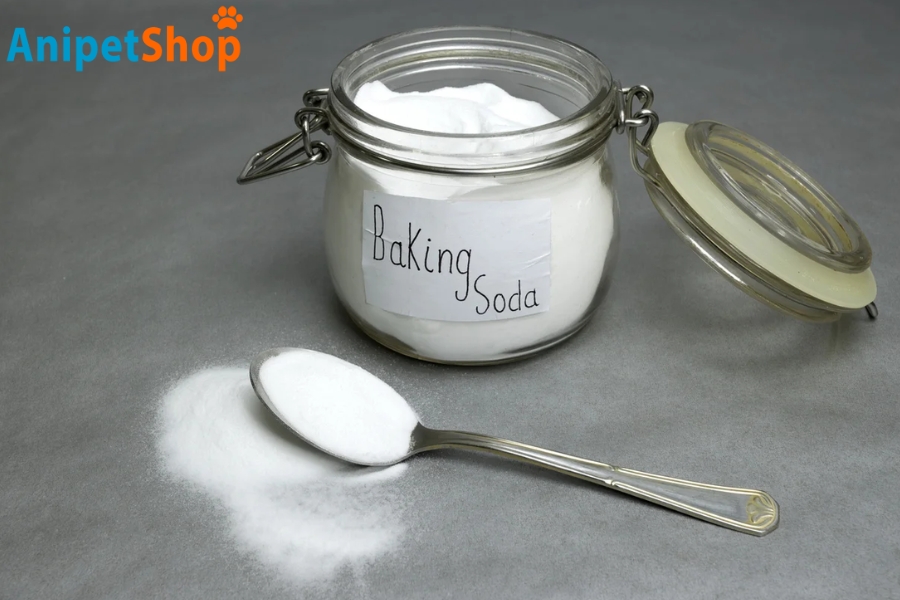
Salt
Using salt as a home remedy can effectively dehydrate and eliminate fleas on dogs. This method leverages salt’s natural desiccant properties, causing fleas to lose moisture and ultimately perish. It is a simple, cost-effective solution that can be easily integrated into a pet care routine.
To use salt for flea control, follow these steps:
Begin by thoroughly vacuuming your home, paying close attention to areas where your dog frequently rests. This initial step is essential as it helps to remove existing flea eggs and larvae from the environment.
After vacuuming, sprinkle finely ground salt or table salt evenly over carpets, rugs, and upholstery. Make sure that the salt penetrates deep into the fibers by using a brush or broom to work it in. Allow the salt to sit for 12 to 48 hours, depending on the severity of the infestation. During this period, the salt will dehydrate and kill the fleas.
It is important to note that while salt is effective for treating the environment, it should not be directly applied to your dog’s skin. Direct application can cause irritation and dryness, which may worsen the problem. Instead, focus on treating the areas your dog frequents to minimize flea exposure.
After the recommended period, vacuum thoroughly again to remove the salt and dead fleas. Dispose of the vacuum bag or empty the canister immediately to prevent re-infestation. This process may need to be repeated every few days until the flea population is under control.
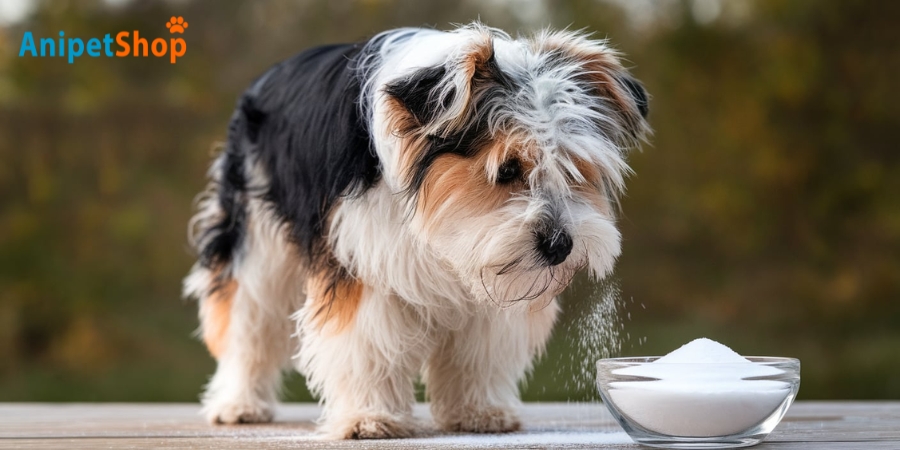
Flea Diffusers
Flea diffusers offer a convenient and effective solution for reducing flea populations in your home environment. These devices work by dispersing specific flea-repellent substances into the air, creating an inhospitable atmosphere for fleas. Typically, flea diffusers utilize essential oils, such as eucalyptus or lavender, which are known for their flea-repellent properties. By consistently releasing these oils, diffusers can help to maintain a flea-free zone, thereby providing a continuous form of protection for your pets and household.
The operation of flea diffusers is straightforward. Once plugged in, the device heats a pad infused with essential oils, converting the liquid into vapor. This vapor then spreads throughout the room, repelling fleas and preventing their proliferation. Most flea diffusers are designed for ease of use, often requiring only a monthly replacement of the oil pad. This makes them a low-maintenance option for pet owners seeking to supplement other flea control measures.
However, it is important to note that while flea diffusers can be highly effective, their success is contingent upon proper usage and placement. To maximize their efficacy, it is advisable to deploy diffusers in areas where your pets spend significant amounts of time, such as living rooms or sleeping areas. Additionally, ensuring good ventilation can help to evenly distribute the repellent vapors throughout the space.

Brewer’s Yeast
Rich in B-vitamins and essential nutrients, brewer’s yeast is another natural remedy that can help repel fleas on dogs. This dietary supplement, derived from Saccharomyces cerevisiae, is commonly used in holistic pet care due to its numerous health benefits, including the potential to deter fleas. When incorporated into a dog’s diet, brewer’s yeast produces a scent that is unappealing to fleas, effectively acting as a natural repellent.
To utilize brewer’s yeast for flea prevention, it can be added to your dog’s food. The typical dosage varies depending on the size of the dog: generally, small dogs can receive up to a teaspoon daily, while larger breeds may be given up to a tablespoon. It is advisable to consult with a veterinarian before starting any new supplement to guarantee the correct dosage and to rule out any potential allergies or interactions with other medications.
Brewer’s yeast is not only beneficial in repelling fleas but also plays a role in enhancing your dog’s overall health. The rich B-vitamin content supports a healthy coat and skin, promotes proper digestion, and bolsters the immune system. Additionally, the presence of other essential nutrients, such as chromium, can aid in maintaining balanced blood sugar levels.
While brewer’s yeast is generally safe, some dogs may exhibit sensitivities. Observing your pet for any adverse reactions, such as gastrointestinal upset or excessive scratching, is essential. Should such symptoms occur, discontinue use and consult your veterinarian promptly.
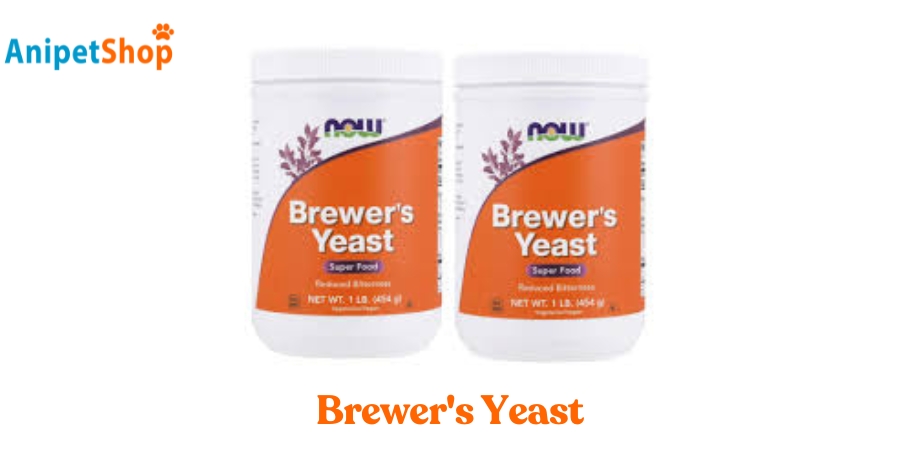
Frequently Asked Questions
How quickly can a flea infestation develop in a home?
A flea infestation can develop rapidly. In just 30 days, 10 female fleas can multiply to over a quarter million fleas in various life stages. Female fleas start laying eggs within 24 to 48 hours after their first blood meal, producing up to 50 eggs per day. Optimal conditions for flea larvae are temperatures of 65-80°F with shaded areas and high humidity.
How do fleas enter a home?
Fleas can enter a home through pets that spend time outdoors, on clothing or shoes of humans, or by hitching a ride on other animals like rodents.
Can fleas on dogs bite humans?
Yes, fleas on dogs can bite humans. While they prefer dogs, they can still cause itching and allergic reactions in people. Common signs include excessive scratching, red bumps, and visible fleas or flea dirt on your dog’s coat.
Check out more: Flea Bites on Dogs: What Are They Like and How to Treat Them?
Can dietary changes help in preventing fleas in dogs?
Yes, certain dietary changes can help repel fleas. Essential fatty acids, digestive enzymes, and dietary moisture are crucial for flea resistance and maintaining healthy skin. Moisture in the diet keeps dogs hydrated and their skin supple.For instance, incorporating garlic and brewer’s yeast into a dog’s diet may have flea-repellent properties.
How long do dietary changes take to show effects in flea prevention?
It can take a few weeks to a month for dietary changes to show noticeable effects. Consistency is key, and it is important to monitor your pet for any adverse reactions.
Conclusion
The outlined home remedies for addressing fleas on dogs present a range of natural and accessible options. Each method, from apple cider vinegar to vacuuming, offers unique mechanisms for repelling or eliminating fleas, promoting both pet health and comfort.
By utilizing these remedies, pet owners can reduce reliance on chemical treatments, potentially minimizing adverse effects on dogs. Employing these strategies consistently can contribute to a more effective and holistic approach to flea management.
View More:
- Flea on Dogs?
- How to Get Rid of Fleas in Your Home
- What Do Flea Eggs Look Like and How Do You Get Rid of Them?
- Flea Bites on Dogs: What Are They Like and How to Treat Them?
References:
- Dryden, M. W. (2020). Flea and tick control in the United States for dogs and cats: Challenges and opportunities. Veterinary Parasitology: Regional Studies and Reports, 20, 100388. https://doi.org/10.1016/j.vprsr.2020.100388
- Wengenmayer, C., Lang, T., Roepke, D., & Heckeroth, H. (2020). Efficacy and safety of fluralaner (Bravecto® spot-on solution) against fleas and ticks on cats presented as veterinary patients in Germany and the UK. Parasite, 27, 63. https://doi.org/10.1051/parasite/2020048
- Wahab, A., Khan, R., Ullah, I., Ahmad, N., Shah, M. R., Khan, A., … ul Haq, E. (2020). Repellent activity of essential oils against the dog flea, Ctenocephalides canis (Curtis, 1826). Brazilian Journal of Veterinary Parasitology, 29(4), 1–6. https://doi.org/10.1590/s1984-29612020074
- AKC Pet Insurance. (n.d.). Natural flea and tick prevention. https://www.akcpetinsurance.com/blog/natural-flea-and-tick-prevention
- Natural Resources Defense Council. (n.d.). Nontoxic ways to protect your pet. https://www.nrdc.org/stories/nontoxic-ways-protect-your-pet
Lily Watson is an author specializing in veterinary care in Australia. With a profound passion for animal welfare and a solid foundation in veterinary science, Lily has dedicated herself to disseminating valuable knowledge and information for both pet owners and professionals in this field.

